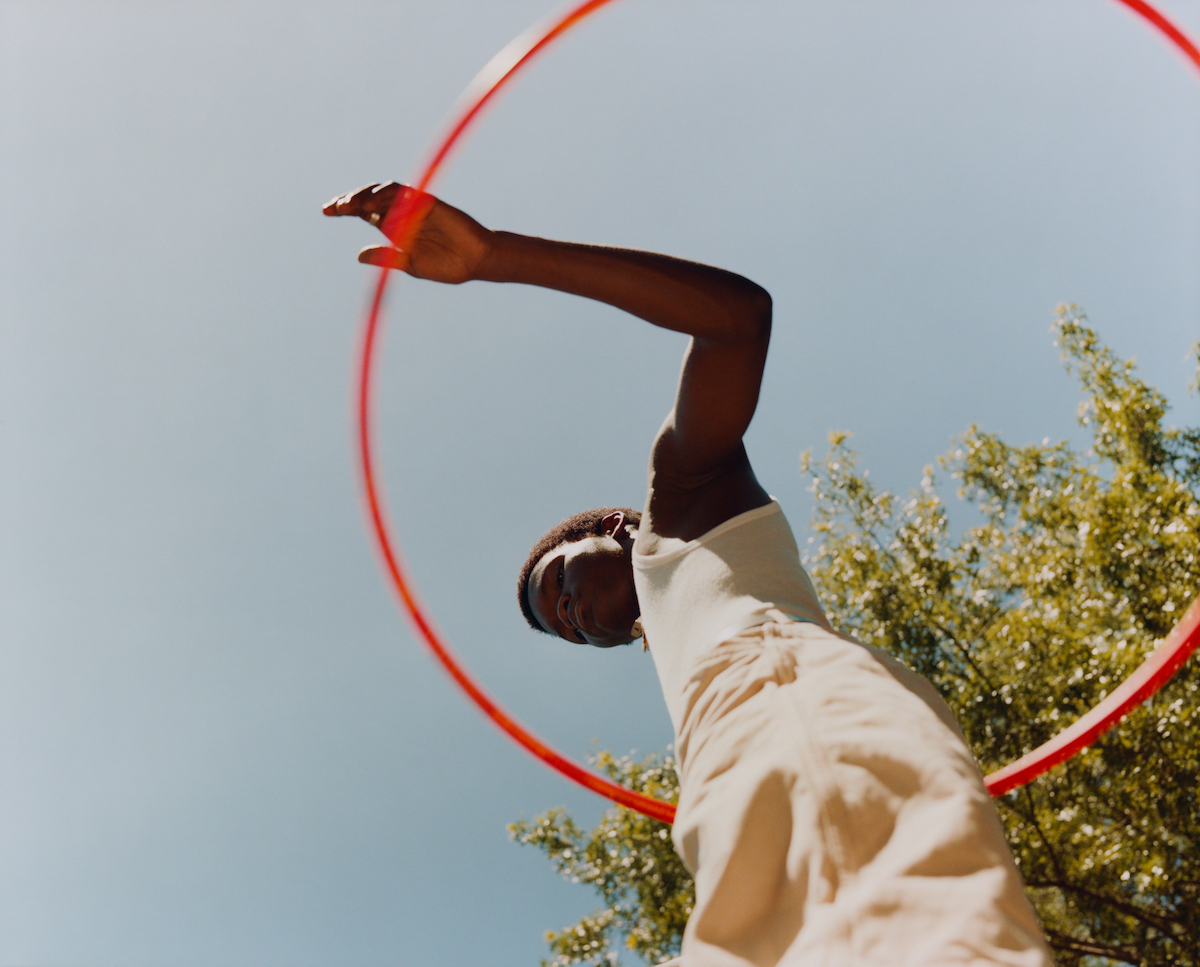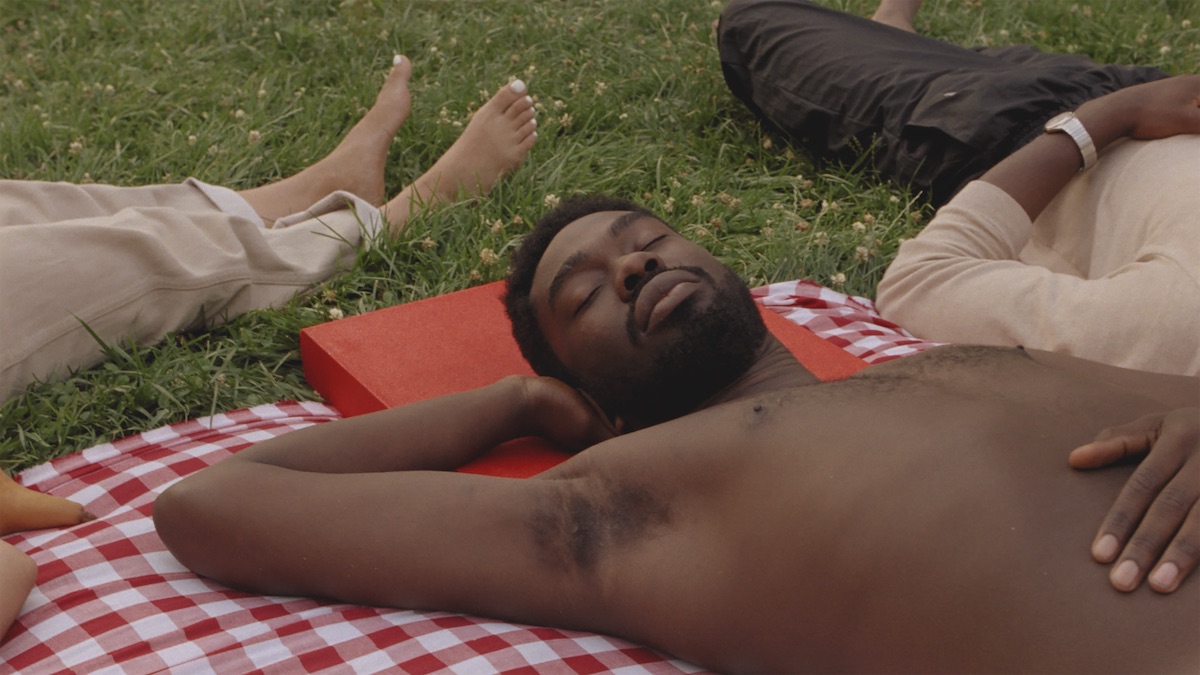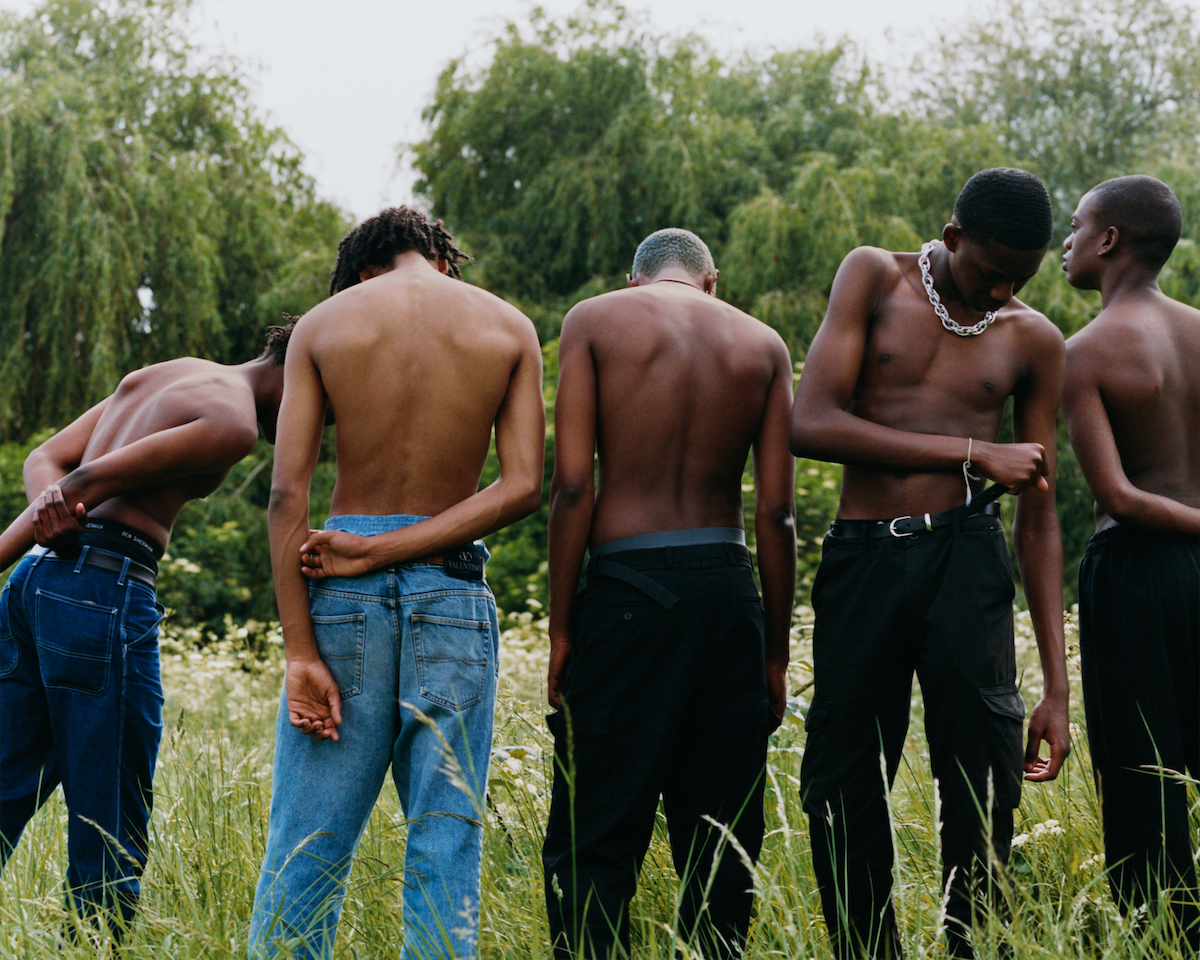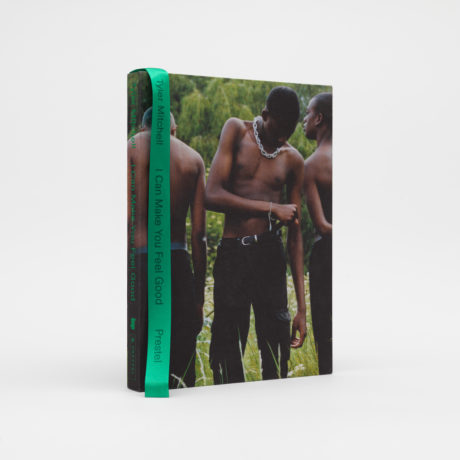
In Tyler Mitchell’s debut monograph, I Can Make You Feel Good, young Black people eat sweets, sleep easy and hold on to each other with both arms. In these portraits of friends, models and a few famous figures, Mitchell leans into a leisure he dubs “White fun”, writing, in the book’s opening note, “I often think about what White fun looks like and this notion that Black people can’t have the same. […] My work comes from a place of wanting to push back against this lack.” I Can Make You Feel Good pushes vigorously: each and every spread is full bleed, and in this way, each image bears an assertive intimacy. Mitchell’s counterpoint to Black lack is visual abundance.

“Mitchell’s work is invested in many types of luxury, but the luxury of quiet ease leads his images first and foremost”
Mitchell’s work in fashion is extensive––he counts Calvin Klein, Comme des Garçons, Givenchy and Prada as clients, and has conducted shoots for British Vogue, The Fader, i-D and AnOther magazine. What is more, he was the first Black photographer to shoot the cover of American Vogue, with a portrait of Beyoncé no less. This work suffuses the monograph’s sartorial landscape, as does Mitchell’s background as a skater brought up in the suburbs of Atlanta, Georgia. All his models move with languid grace, whether they are kicking their feet out in kitten-heeled sling-backs or shrugging into a pullover hoodie. Mitchell’s work is invested in many types of luxury, but the luxury of quiet ease leads his images first and foremost.

I Can Make You Feel Good is a record of play, one that, Mitchell also writes, is “gut-punching in its optimism.” There is indeed a painful bite to the pleasure of seeing Black girls race with glee through a field (impossibly, they are frolicking); seeing Black boys skip rope; seeing a Black person lick a flower, just to try it, just because. In one portrait, a subject holds up a tiny water gun, and in this dreamland that Mitchell is probing, no one mistakes it for anything other than a toy. In the absence of white hypervigilance, Black playfulness expands.
So too expands a Black person’s capacity for rest. Mitchell stages a picnic with all the attendees asleep. In one shot, he focuses in on the uncomplicated peace of a face mid-nap, the trusting openness with which the model lays on his back, with his hand tucked behind his head, his chest exposed. Mitchell holds the camera level to his subject, and from this vantage point, the viewer feels like part of the picnic, as though we are peeking over from our own corner of the red checkered blanket.

Similarly, when he photographs friends jumping rope, we—the viewers—are sprawled on the spot of pavement where the middle subject trains his gaze while he skips his feet. When Mitchell photographs two skateboarders, who bend their knees and face each other as they head down a ramp, clasping each other’s forearms for stability, for safety, we are looking up at their faces from below and become caught in the tender wobble of their embrace.
“Mitchell emphasises the tactile relationship between fabric, backdrop and figure for natural continuity with the surrounding environment”
Throughout the monograph, Mitchell also maintains a zealous eye for texture and colour. A portrait of a model in a fancifully pleated cream-yellow dress is paired with a close shot of the cream stucco wall against which she leans. In several other images, Mitchell pushes his camera right up to the folds of a blouse, or a wool sweater’s soft loops.

One subject’s face hides behind a branch of peroxide pink flowers, the colour of which matches the bright splotches on their garment; across the page, in a close-up, the artificial pink of the fabric practically blooms. Through these insistent juxtapositions, Mitchell emphasises the tactile relationship between fabric, backdrop and figure, and even his most whimsically staged portraits are imbued with a sense of natural continuity with the surrounding environment.
In another contrast, Mitchell photographs a boy wearing a yellow t-shirt with black trim. The boy is preparing to cross a street, but he’s looking back at us with suspicion. The page beside his image is awash with that same joyful yellow, as though to underscore both the beauty of this hue and this young boy, whose eyes are creased with a furrowed knowingness.

He is not the only one whose gaze is layered with something darker than placid delight. When Mitchell’s camera meets the eyes of his models, the artist clears space for the “gut punch”. There is an inherently aspirational quality to the words “I can make you feel good”. Mitchell knows that if his images are a salve, they do not clear the wound completely. His utopia is immersive, but still bordered by reality.
“The Black body is still politicized,” Mitchell writes, “and sometimes unable to move through the real world as freely as I would like.” The young artist finds respite in the gentleness with which one Black person can button the shirt cuff of another. Here, the wrist is treasured. It can be held and handled with softness, with love. He gives a full page spread to the clouds––and the sky, whenever it peeks or billows across these pages, is always the most baby of blues.
All images courtesy Tyler Mitchell






